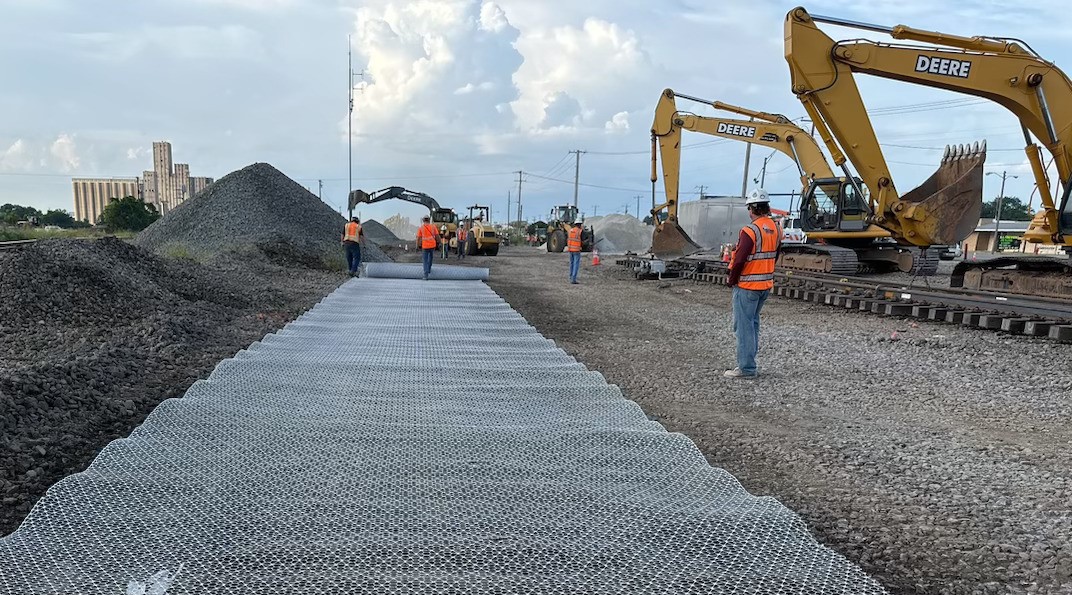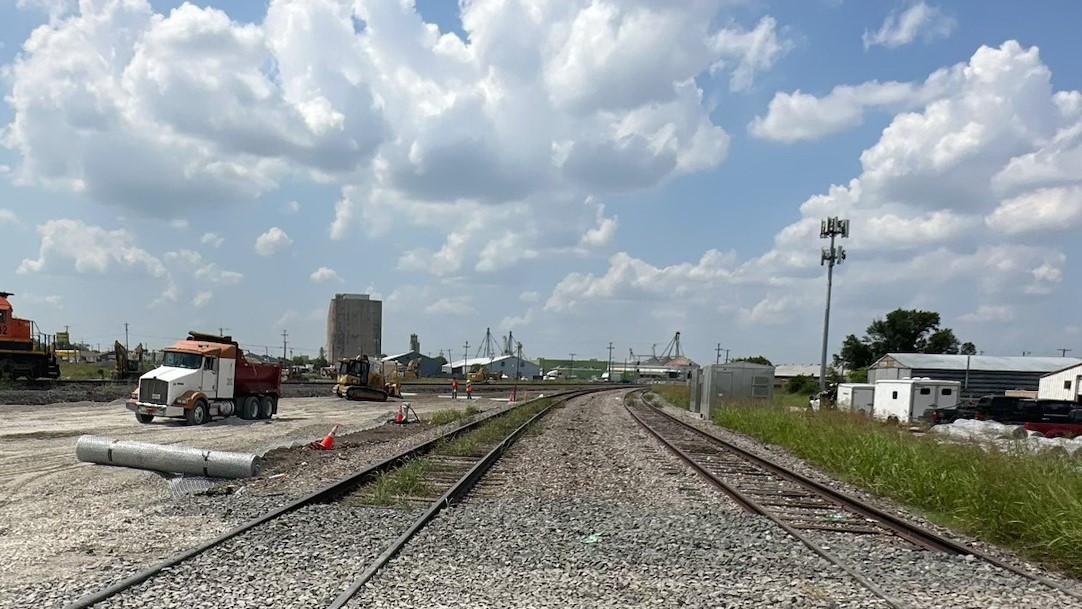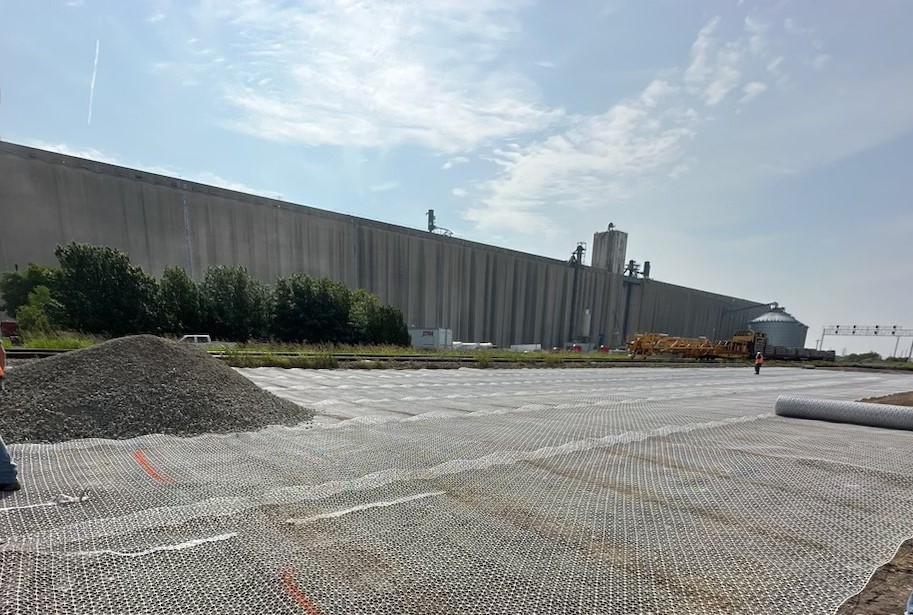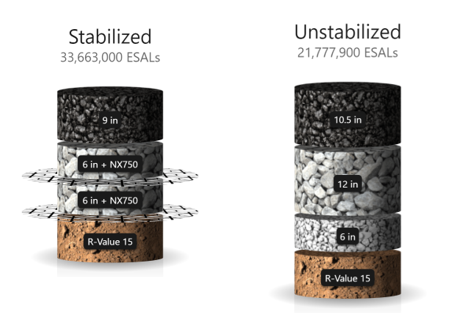Shallow Utilities and Soil Stabilization Challenges
by Paul Schmitz, on April 14, 2025
The challenges are significant:
- Limited excavation depth restricts how much weak soil can be removed.
- Heavy construction loads can damage utilities not properly protected.
- Differential settlement can occur, leading to pavement failure or utility disruption.
- Construction delays and added costs often result from accommodating utility constraints.
 This is where advanced soil stabilization using Tensar geogrid comes into play. Geogrids are engineered, polymer grid structures that stabilize soils through mechanical interlock. The interlock with aggregate creates a mechanically stabilized layer (MSL) that spreads loads more evenly, reduces pressure on subgrades, and enhances the performance of the entire structure. MSLs can also provide the same or better performance with shallower excavation depths.
This is where advanced soil stabilization using Tensar geogrid comes into play. Geogrids are engineered, polymer grid structures that stabilize soils through mechanical interlock. The interlock with aggregate creates a mechanically stabilized layer (MSL) that spreads loads more evenly, reduces pressure on subgrades, and enhances the performance of the entire structure. MSLs can also provide the same or better performance with shallower excavation depths. Tensar geogrids, in particular, offer these key advantages:
Tensar geogrids, in particular, offer these key advantages:
- Reduced Excavation Required: Geogrids can be installed directly over weak soils with limited excavation, minimizing the risk of damaging utility lines.
- Load Distribution: Distribute traffic and structural loads over a broader area, reducing vertical stress.
- Improved Bearing Capacity: The geogrid-stabilized layer increases the stiffness of the foundation, reducing the chance of differential settlement.
- Faster Construction: Less material handling, shorter timelines, and no need to wait for chemical curing (as with cement/lime stabilization).
- Reduced Cost: Tensar geogrids reduce the amount of required aggregate. This translates to lower hauling and labor costs, and avoids the expense of relocating utilities.
Many municipalities, DOTs, and private developers have successfully used Tensar geogrids in utility-heavy environments. For example:
Double Track Control Point - BNSF
CHALLENGE

BNSF needed to add approximately seven miles of new mainline track, and that work included several drainage improvements like culvert extensions, crossing improvements, and bridges. Many of the areas that required subgrade improvements were not suitable for lime or fly ash due to presence of electrical conduit, signal cables, and other utilities that were placed at shallow depths. BNSF was also facing time constraints and wanted to minimize track outages, and they needed a solution that could be installed quickly.
 TENSAR SOLUTION
TENSAR SOLUTION
Pecos Street Widening
 CHALLENGE
CHALLENGEAdams County, Colorado needed to increase the capacity of Pecos Street due to increased vehicle and truck traffic. In addition, the roadway alignment ran through an old undocumented landfill site. In order to address the poor soil conditions of the undocumented fill, the county had designed a thick section that required chemical treatment of the subgrade. This solution, however, interfered with utilities in the area. Adams County needed a solution that would avoid these utilities and provide superior performance for increasing vehicle and truck traffic.
 TENSAR SOLUTION
TENSAR SOLUTIONTensar designed a pavement section using Tensar+ software with two layers of high performing InterAx® NX750 geogrid to address these concerns. Using the NX750 geogrid minimized excavation which reduced the risk of encountering utilities. It also mitigated the risk of building on undocumented fill. The two-layer geogrid system achieved this by creating a stiffened aggregate layer that reduces risk of any differential settlement. Using geogrid in the section also reduced the risk of full-depth failure as compared to chemically treated subgrade. In addition to resolving the difficulties of the project, InterAx geogrid provided cost and schedule savings.
Shallow utilities don't have to derail your soil stabilization strategy. With the right materials and design approach, it's possible to build strong, resilient infrastructure while keeping buried utilities safe and intact. Geogrid solutions from Tensar offer a proven, cost-effective way to overcome the challenges of limited excavation depth, soft subgrades, and utility conflicts.
Whether you're managing a municipal road project or a private site development, incorporate Tensar geogrids into your design for faster timelines, lower costs, and long-term durability. Visit our website to learn more about these and the many other applications we can handle.



